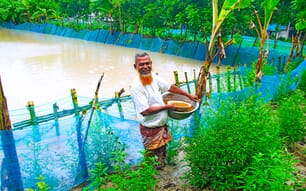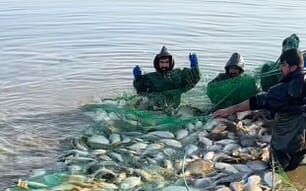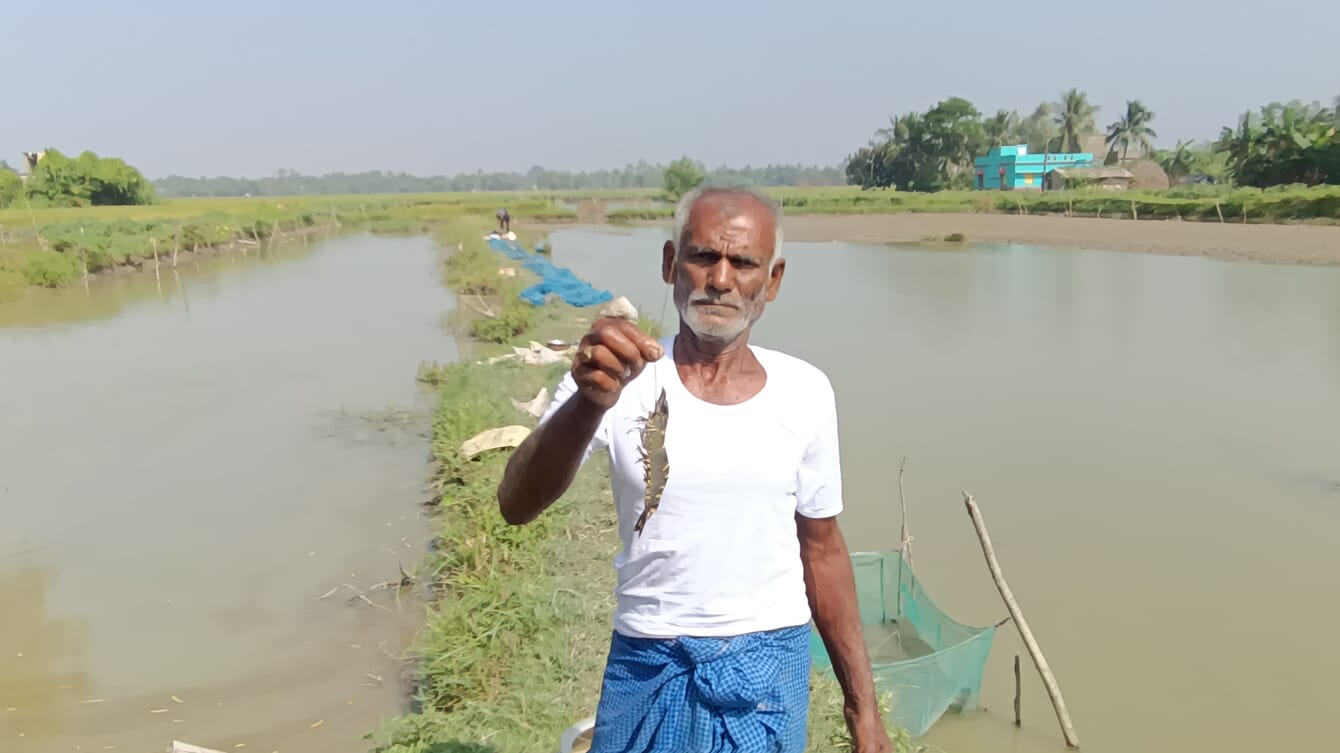
© Gurvinder Singh
What inspired you to embark on a career in aquaculture?
I lived my childhood in utter poverty, as my father was a farmer who passed away when I was just 12 years old. We were so poor that we didn’t have money to perform his last rites and we had to take loans from private money lenders for survival. We were nine family members including my six siblings, my mother and my elder’s brother’s wife.
I started working as farm labourer soon after my father passed away and I started fish farming at the age of 16 in our small family pond, buying more land for fish farming with the income I made by labouring. Life was tough and flood water used to enter our house during the monsoon, but I achieved success thanks to my determination and hard work.
Did you take any formal training?
No, I learnt by watching other fish farmers in the village. No official from the fisheries department has ever approached me for training.
What is the size of your farm and what species do you produce?
In total my farm consists of four ponds spread across eight acres. I cultivate Indian major carp and vannamei shrimp.
What is your total production and how do you procure your feed and seed?
The total production is around 4,000 kg annually and the revenue is around Rs 5 lakh ($5,922). We make the feed in our house – usually mixing cow dung, almond shell crush and rice bran. The seeds are procured locally.
What are the major challenges you face?
We live in Sundarbans, which is a mangrove area close to the Bay of Bengal and prone to natural disasters. We face natural hazards like cyclones and floods every year that destroy our farms and production.
We faced severe losses during Cyclone Amphan in 2020 when the fish were ready for the harvest but the entire stock was washed away due to the breach in embankments of a nearby river.
The water entered our fields and destroyed everything. I faced losses to the tune of Rs 5 lakhs ($5,592) in the cyclone. It took us almost one year to reconstruct the ponds and start farming again and the government hardly gave any financial support.
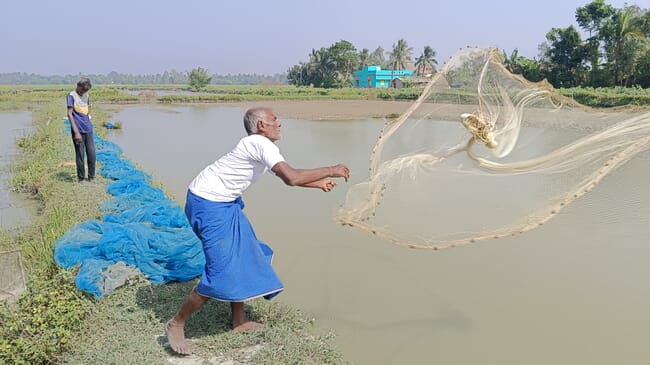
© Gurvinder Singh
What does a typical day at work consist of?
I wake up around 3 am every day and come to the farm. I catch the fish and go to the market to sell them. After returning, I spend my day in the farm before throwing feed in the evening hours. I retire to bed around 9 pm.
I have been suffering from severe spondylitis for the past two decades, which has affected my walking ability, but still I have not given up my daily routine, as fish farming has been my passion since childhood.
What is your biggest worry at work?
The biggest worry is the vagaries of the nature. The thought of our production getting destroyed during the harvest season by a natural disaster gives me sleepless nights.
I have lost both investment and production in the past, which haunts me every time I hear a forecast of a cyclone or floods looming in the area. Moreover, the rainfall has become erratic which also leads to drops in production.
What advice would you give to people considering a career in aquaculture?
I would advise people that fish farming is a lucrative business and has good potential but it’s very important to take training before plunging into the profession, as inadequate knowledge might incur severe losses.
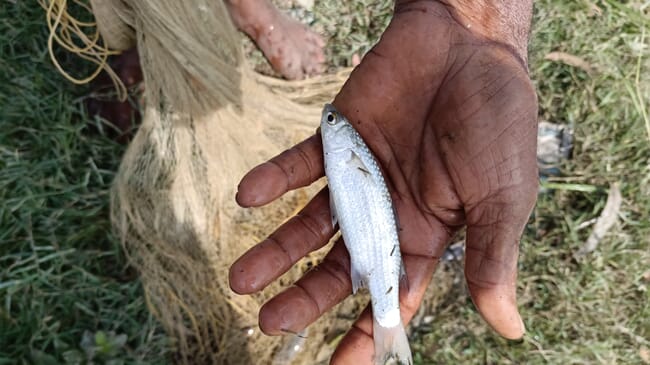
© Gurvinder Singh


